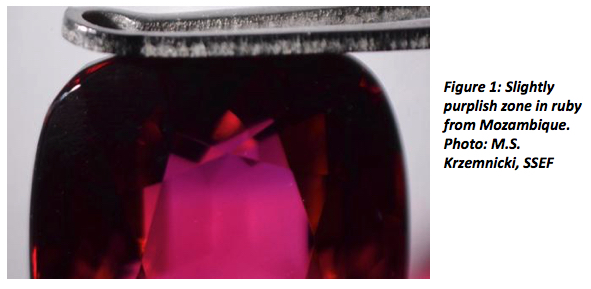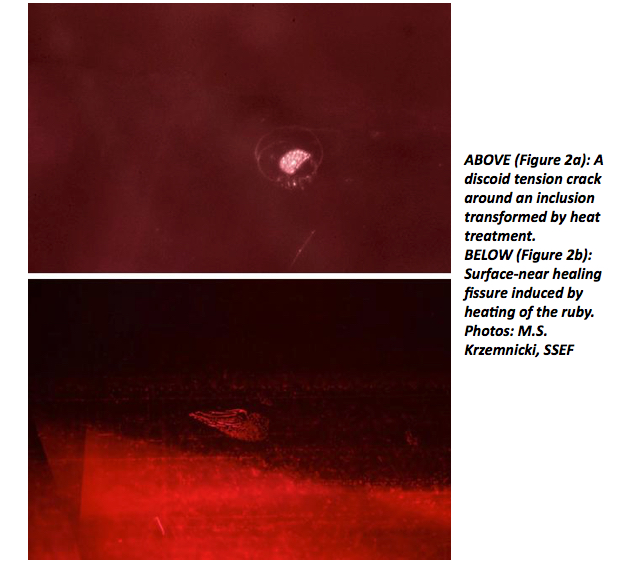Since their discovery in early 2009, the ruby deposits near Montepuez in Mozambique have produced an impressive number of exceptional-quality stones, including iconic gems such as the Rhino Ruby (22.04 cts), the Scarlet Drop (15.95 cts) and the Eyes of the Dragon (a pair of rubies pair weighing 11.23 cts and 10.70 cts), all of which were analysed by the Swiss Gemmological Institute SSEF. But from the very beginning, there has been evidence in the market of lower-quality rubies from Mozambique that have been heated with or without a flux (borax), resulting in healed fissures with residue, and in some cases heavily-fractured material that has been lead-glass filled.
In more recent years, an increasing number of fine quality rubies from Mozambique have come onto the market, after having undergone so-called "low-temperature heating" (below 1000 °C). Presumably, the aim of this treatment is to enhance the colour slightly, by reducing subtle purplish zones which are sometimes be present in rubies from this location (Figure 1).

Only a portion of the rubies that have been subject to this relatively low-temperature heating procedure show the microscopic features that commonly characterise heat treatments (Figures 2a and 2b), which would be easily recognisable by an experienced gemmologist (Gübelin & Koivula 2008, Pardieu 2013, Krzemnicki 2015). Others show no or nearly no heat-related transformations of inclusions (see also Pardieu et al. 2013, Saesseaw et al. 2018). It is a situation that challenges gemmologists and gemmological laboratories, and also, ultimately, the trade.
To meet the challenge, the Swiss Gemmological Institute SSEF has conducted an extensive research project to establish more specific criteria to detect low-temperature heat treatment, studying more than 200 unheated and heated rubies (rough and
...
Read more from our friends at Mining.com



